Mission type Heliophysics COSPAR ID 1994-071A Launch mass 1,195 kg (2,635 lb) Rocket Delta II | Operator NASA Website Official Page Launch date 1 November 1994 Manufacturer Martin Marietta | |
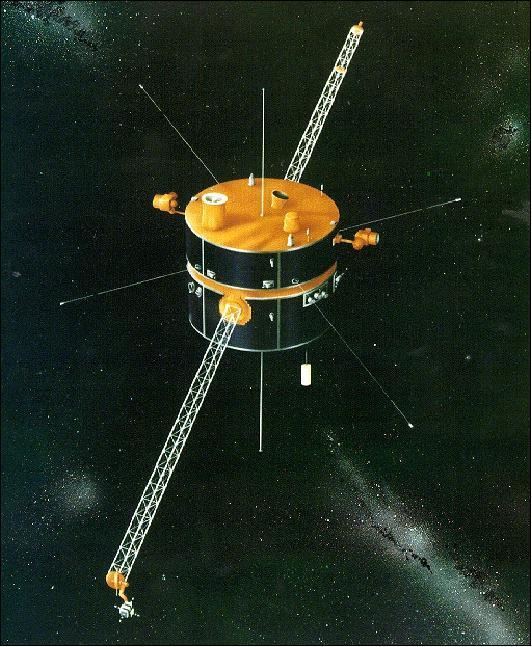 | ||
Mission duration Minimum: 3 year
Elapsed: 22 years, 5 months and 5 days KONUS Gamma-Ray Burst Experiment WAVES The Radio and Plasma Wave Investigation 3DP A Three-Dimensional Plasma and Energetic Particle Investigation Similar Geotail, Polar, Advanced Composition Explorer, Ulysses, International Cometary Explorer | ||
The Global Geospace Science (GGS) Wind satellite is a NASA science spacecraft launched at 04:31:00 EST on November 1, 1994, from launch pad 17B at Cape Canaveral Air Force Station (CCAFS) in Merritt Island, Florida aboard a McDonnell Douglas Delta II 7925-10 rocket. Wind was designed and manufactured by Martin Marietta Astro Space Division in East Windsor, New Jersey. The satellite is a spin stabilized cylindrical satellite with a diameter of 2.4 m and a height of 1.8 m.
Contents
- The science objectives of the Wind mission
- The science instruments on the Wind spacecraft
- Time domain sampler
- Thermal Noise Receiver
- Wind3DP
- Electrostatic analyzers
- Solid state telescopes
- WindMFI
- WindSWE
- WindKONUS and TGRS
- WindEPACT
- WindSMS
- Some discoveries andor contributions to science by the Wind spacecraft
- List of Refereed Publications for Wind
- Science Highlights in the News
- Awards
- Other names
- References
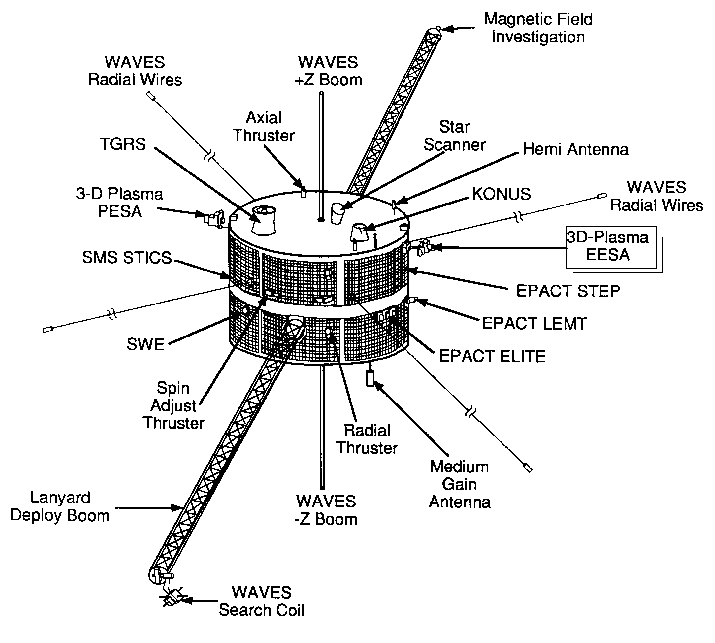
It was deployed to study radio waves and plasma that occur in the solar wind and in the Earth's magnetosphere. The spacecraft's original mission was to orbit the Sun at the L1 Lagrangian point, but this was delayed to study the magnetosphere and near lunar environment when the SOHO and ACE spacecraft were sent to the same location. Wind has been at L1 continuously since 2004, and is still operating as of 5 April 2017. Wind currently has enough fuel to last over 50 years at L1. Wind continues to produce new and exciting scientific results and as of January 31, 2017 (not including 2017 publications) has accumulated over 4310 refereed scientific publications.

Mission operations are conducted from the Multi-Mission Operations Center (MMOC) in Building 14 at Goddard Space Flight Center in Greenbelt, Maryland.
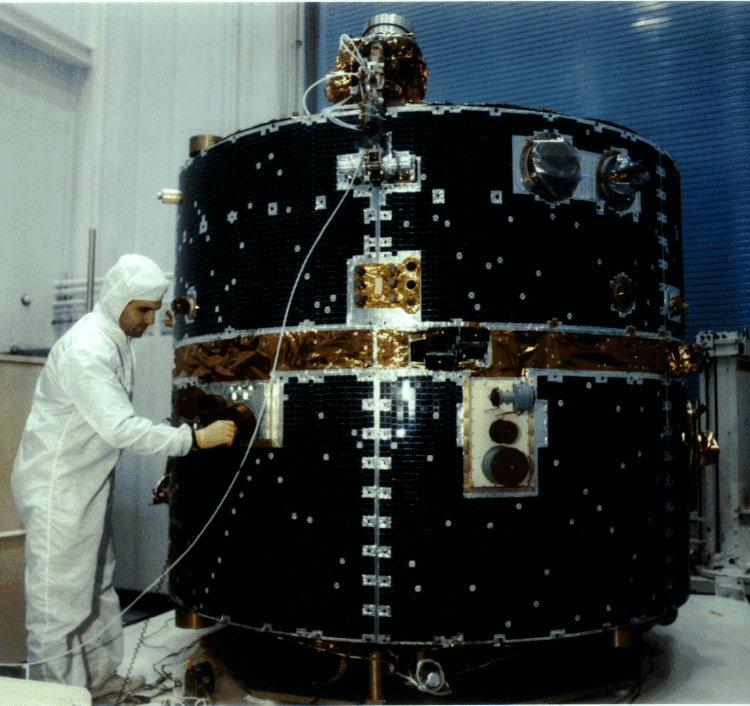
Wind data can be accessed using the SPEDAS software.
Wind is the sister ship to GGS Polar.
The science objectives of the Wind mission
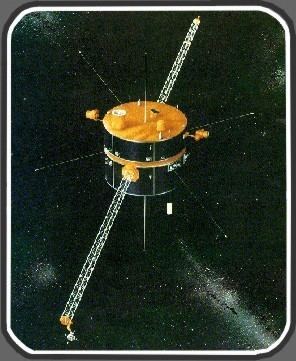
The science instruments on the Wind spacecraft
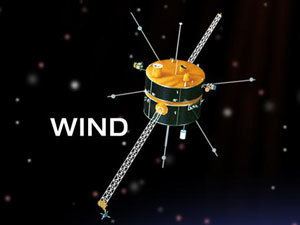
The aim of ISTP is to understand the behavior of the solar-terrestrial plasma environment in order to predict how the Earth's atmosphere will respond to changes in solar wind conditions. Wind's objective is to measure the properties of the solar wind before it reaches the Earth. The Wind spacecraft has an array of instruments including: Konus, the Wind Magnetic Field Investigation (MFI), the Solar Wind and Suprathermal Ion Composition Experiment (SMS), The Energetic Particles: Acceleration, Composition, and Transport (EPACT) investigation, the Solar Wind Experiment (SWE), a Three-Dimensional Plasma and Energetic Particle Investigation (3DP), the Transient Gamma-Ray Spectrometer (TGRS), and the Radio and Plasma Wave Investigation (WAVES). The Konus and TGRS instruments are primarily for gamma-ray and high energy photon observations of solar flares or gamma-ray bursts and part of the Gamma-ray Coordinates Network. The SMS experiment measures the mass and mass-to-charge ratios of heavy ions. The SWE and 3DP experiments are meant to measure/analyze the lower energy (below 10 MeV) solar wind protons and electrons. The WAVES and MFI experiments were designed to measure the electric and magnetic fields observed in the solar wind. All together, the Wind spacecraft's suite of instruments allows for a complete description of plasma phenomena in the solar wind plane of the ecliptic.
Time domain sampler
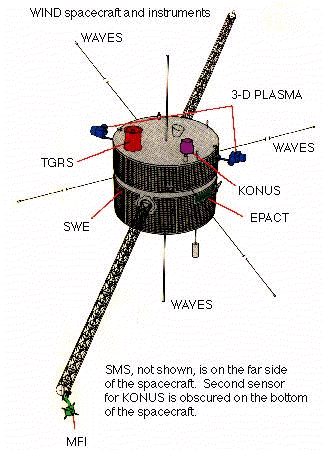
The electric field detectors of the Wind WAVES instrument are composed of three orthogonal electric field dipole antennas, two in the spin plane (roughly the plane of the ecliptic) of the spacecraft and one along the spin axis. The complete WAVES suite of instruments includes five total receivers including: Low Frequency FFT receiver called FFT (0.3 Hz to 11 kHz), Thermal Noise Receiver called TNR (4–256 kHz), Radio receiver band 1 called RAD1 (20–1040 kHz), Radio receiver band 2 called RAD2 (1.075–13.825 MHz), and the Time Domain Sampler called TDS (designed and built by the University of Minnesota). The longer of the two spin plane antenna, defined as Ex, is 100 m tip-to-tip while the shorter, defined as Ey, is 15 m tip-to-tip. The spin axis dipole, defined as Ez, is roughly 12 m tip-to-tip. When accounting for spacecraft potential, these antenna lengths are adjusted to ~41.1 m, ~3.79 m, and ~2.17 m [Note: these are subject to change and only estimates and not necessarily accurate to two decimal places]. The Wind WAVES instrument also detects magnetic fields using three orthogonal search coil magnetometers (designed and built by the University of Iowa). The XY search coils are oriented to be parallel to the XY dipole antenna. The search coils allow for high-frequency magnetic field measurements (defined as Bx, By, and Bz). The WAVES Z-Axis is anti-parallel to Z-GSE (Geocentric Solar Ecliptic) direction. Thus any rotations can be done about the Z-Axis in the normal Eulerian sense followed by a change of sign in the Z-component of any GSE vector rotated into WAVES coordinates.
Electric (and magnetic) field waveform captures can be obtained from the Time Domain Sampler (TDS) receiver. TDS samples are a waveform capture of 2048 points (16384 points on the STEREO spacecraft) per field component. The waveforms are measures of electric field versus time. In the highest sampling rates, the Fast (TDSF) sampler runs at ~120,000 samples per second (sps) and the Slow (TDSS) sampler runs at ~7,500 sps. TDSF samples are composed of two electric field components (typically Ex and Ey) while TDSS samples are composed of four vectors, either three electric and one magnetic field or three magnetic and one electric field. The TDSF receiver has little to no gain below about ~120 Hz and the search coil magnetometers roll off around ~3.3 Hz.
Thermal Noise Receiver
The TNR measures ~4–256 kHz electric fields in up to 5 logarithmically spaced frequency bands, though typically only set at 3 bands, from 32 or 16 channels per band, with a 7 nV/(Hz)1/2 sensitivity, 400 Hz to 6.4 kHz bandwidth, and total dynamic range in excess of 100 dB. The data are taken by two multi-channel receivers which nominally sample for 20 ms at a 1 MHz sampling rate (see for more information). The TNR is often used to determine the local plasma density by observing the plasma line, an emission at the local upper hybrid frequency due to a thermal noise response of the wire dipole antenna. One should note that observation of the plasma line requires the dipole antenna to be longer than the local Debye length, λDe. For typical conditions in the solar wind λDe ~ 7–20 m, much shorter than the wire dipole antenna on Wind. The majority of this section was taken from.
Wind/3DP
The Wind/3DP instrument (designed and built at the Berkeley Space Sciences Laboratory) was designed to make full three-dimensional measurements of the distributions of suprathermal electrons and ions in the solar wind. The instrument includes three arrays, each consisting of a pair of double-ended semi-conductor telescopes each with two or three closely sandwiched passivated ion implanted silicon detectors, which measure electrons and ions above ~20 keV. The instrument also has top-hat symmetrical spherical section electrostatic (ES) analyzers with microchannel plate detectors (MCPs) are used to measure ions and electrons from ~3 eV to 30 eV. The two types of detectors have energy resolutions ranging from ΔE/E ≈ 0.3 for the solid state telescopes (SST) and ΔE/E ≈ 0.2 for the top-hat ES analyzers. The angular resolutions are 22.5° x 36° for the SST and 5.6° (near the ecliptic) to 22.5° for the top-hat ES analyzers. The particle detectors can obtain a full 4π steradian coverage in one full(half) spin (~3 s) for the SST (top-hat ES analyzers). The majority of this section was taken from.
Electrostatic analyzers
The arrays of detectors are mounted on two opposing booms, each 0.5 m in length. The top-hat ES analyzers are composed of four separate detectors, each with different geometry factors to cover different ranges of energies. The electron detectors, EESA, and ion detectors, PESA, are each separated into low (L) and high (H) energy detectors. The H and L analyzers contain 24 and 16 discrete anodes, respectively. The anode layout provides a 5.6° angular resolution within ±22.5° of the ecliptic plane (increases to 22.5° at normal incidence to ecliptic plane). The analyzers are swept logarithmically in energy and counters sample at 1024 samples/spin (~3 ms sample period). Thus the analyzers can be set to sample 64 energy samples per sweep at 16 sweeps per spin or 32 energy samples per sweep at 32 sweeps per spin, etc. The detectors are defined as follows:
The majority of this section was taken from.
Solid-state telescopes
The SST detectors consist of three arrays of double-ended telescopes, each of which is composed of either a pair or triplet of closely sandwiched semi-conductor detectors. The center detector (Thick or T) of the triplet is 1.5 cm2 in area, 500 μm thick, while the other detectors, foil (F) and open (O), are the same area but only 300 μm thick. One direction of the telescopes is covered in a thin lexan foil, ~1500 Å of aluminum evaporated on each side to completely eliminate sunlight, (SST-Foil) where the thickness was chosen to stop protons up to the energy of electrons (~400 keV). Electrons are essentially unaffected by the foil. On the opposite side (SST-Open), a common broom magnet is used to refuse electrons below ~400 keV from entering but leaves the ions essentially unaffected. Thus, if no higher energy particles penetrate the detector walls, the SST-Foil should only measure electrons and the SST-Open only ions. Each double-ended telescope has two 36° x 20° FWHM FOV, thus each end of the five telescopes can cover a 180° x 20° piece of space. Telescope 6 views the same angle to spin axis as telescope 2, but both ends of telescope 2 have a drilled tantalum cover to reduce the geometric factor by a factor of 10 to measure the most intense fluxes. The SST-Foil data structures typically have 7 energy bins each with 48 data points while the SST-Open has 9 energy bins each with 48 data points. Both detectors have energy resolutions of ΔE/E ≈ 30%. The majority of this section was taken from.
Wind/MFI
The magnetic field instrument (MFI) on board Wind is composed of dual triaxial fluxgate magnetometers. The MFI has a dynamic range of ±4 nT to ±65,536 nT, digital resolution ranging from ±0.001 nT to ±16 nT, sensor noise level of < 0.006 nT (R.M.S.) for 0–10 Hz signals, and sample rates varying from 44 samples per second (sps) in snapshot memory to 10.87 sps in standard mode. The data are also available in averages at 3 seconds, 1 minute, and 1 hour. The data sampled at higher rates (i.e. >10 sps) is referred to as High Time Resolution (HTR) data in some studies.
Wind/SWE
The Wind spacecraft has two Faraday Cup (FC) ion instruments. The SWE FCs can produce reduced ion distribution functions with up to 20 angular and 30 energy per charge bins every 92 seconds. Each sensor has a ~15° tilt above or below the spin plane and an energy range from ~150 eV to ~8 keV. A circular aperture limits the effects of aberration near the modulator grid and defines the collecting area of the collector plates in each FC. The FCs sample at a set energy for each spacecraft rotation, then step up the energy for the next rotation. Since there are up to 30 energy bins for these detectors, a full reduced distribution function requires 30 rotations or slightly more than 90 seconds.
Wind/KONUS and TGRS
KONUS remains a very active partner in the Gamma-ray Coordinates Network (GCN) and the Interplanetary Network. Notifications of astrophysical transients are sent worldwide instantly from KONUS, and are of importance in the subsequent positioning of telescopes everywhere. Thus, the instrument remains an active contributor to the astrophysical community, for instance, with the Swift mission.
The TGRS instrument was shut off early in the mission due to the planned expiration of coolant.
The two gamma-ray instruments (KONUS and TGRS) on board of Wind, are described on their High Energy Astrophysics Home Page.
Wind/EPACT
The Energetic Particles: Acceleration, Composition and Transport (EPACT) investigation consists of multiple telescopes including: the Low Energy Matrix Telescope (LEMT); SupraThermal Energetic Particle telescope (STEP); and ELectron-Isotope TElescope system (ELITE). ELITE is composed of two Alpha-Proton-Electron (APE) telescopes and an Isotope Telescope (IT).
The highest energy telescopes (APE and IT) failed early in the mission, though APE does two channels of ~5 and ~20 MeV protons but IT was turned off. However, LEMT (covering energies in the 1–10 MeV/nucl range) and STEP (measuring ions heavier than protons in the 20 keV–1 MeV/nucl) range still continue to provide valuable data.
Wind/SMS
The solar wind and suprathermal ion composition experiment (SMS) on Wind is composed of three separate instruments: SupraThermal Ion Composition Spectrometer (STICS); high-resolution mass spectrometer (MASS); and Solar Wind Ion Composition Spectrometer (SWICS). STICS determines the mass, mass per charge, and energy for ions in the energy range of 6–230 keV/e. MASS determines elemental and isotopic abundances from 0.5 to 12 keV/e. SWICS determines mass, charge, and energy for ions in the energy range of 0.5 to 30 keV/e. The SWICS "stop" MCP experienced a failure resulting in reduced capabilities for this instrument and was eventually turned off in May of 2000. The SMS data processing unit (DPU) experienced a latch-up reset on 26 June 2009 that placed the MASS acceleration/deceleration power supply into a fixed voltage mode, rather than stepping through a set of voltages. In 2010, MASS experienced a small degradation in the acceleration/deceleration power supply which reduced the efficiency of the instrument, though this does not seriously affect science data analysis.
Some discoveries and/or contributions to science by the Wind spacecraft
- Observation of relationship between large-scale solar wind-magnetosphere interactions and magnetic reconnection at the terrestrial magnetopause.
- First statistical study of high frequency (≥1 kHz) electric field fluctuations in the ramp of interplanetary (IP) shocks. The study found that the amplitude of ion acoustic waves (IAWs) increased with increasing fast mode Mach number and shock compression ratio. They also found that the IAWs had the highest probability of occurrence in the ramp region.
- Observation of the largest whistler wave using a search coil magnetometer in the radiation belts.
- First observation of shocklets upstream of a quasi-perpendicular IP shock.
- First simultaneous observations of whistler mode waves with electron distributions unstable to the whistler heat flux instability.
- First observation of a electrostatic solitary wave at an IP shock with an amplitude exceeding 100 mV/m.
- First observation of electron-Berstein-like waves at an IP shock.
- First observation of the source region of an IP Type II radio burst.
- First evidence for Langmuir wave coupling to Z-mode waves.
- First evidence to suggest that the observed bi-polar ES structures in the shock transition region are consistent with BGK modes or electron phase space holes.
- First evidence of a correlation between the amplitude of electron phase space holes and the change in electron temperature.
- First evidence of three-wave interactions in the terrestrial foreshock using bi-coherence.
- First evidence of proton temperature anisotropy constraints due to mirror, firehose, and ion cyclotron instabilities.
- First evidence of Alfvén-cyclotron dissipation.
- First (shared with STEREO spacecraft) observation of electron trapping by a very large amplitude whistler wave in the radiation belts (also seen in STEREO observations ).
- First observation of Langmuir and whistler waves in the lunar wake.
- First evidence of direct evidence of electron cyclotron resonance with whistler mode waves driven by a heat flux instability in the solar wind.
- First evidence of local field-aligned ion beam generation by foreshock electromagnetic waves called short large amplitude magnetic structures or SLAMS, which are soliton-like waves in the magnetosonic mode.
List of Refereed Publications for Wind
For a complete list of refereed publications directly or indirectly using data from the Wind spacecraft, see https://wind.nasa.gov/bibliographies.php.
Wind continues to produce relevant research, with its data having contributed to over 2000 publications since 2009 and over 2200 publications prior to 2009. As of January 31, 2017 (not including 2017 publications), the total number of publications either directly or indirectly using Wind data is ~4317 (or an average of ~196 publications/year). Wind data has been used in over 60 high impact refereed publications with ~11 in Science (journal), ~27 in Nature (journal) (includes Nature, Nature Physics, Nature Communications, Scientific Reports, and Scientific American), and ~29 in Physical Review Letters. Note that many of these publications utilized Wind data directly and indirectly by citing the OMNI dataset at CDAWeb, which relies heavily upon Wind measurements.
